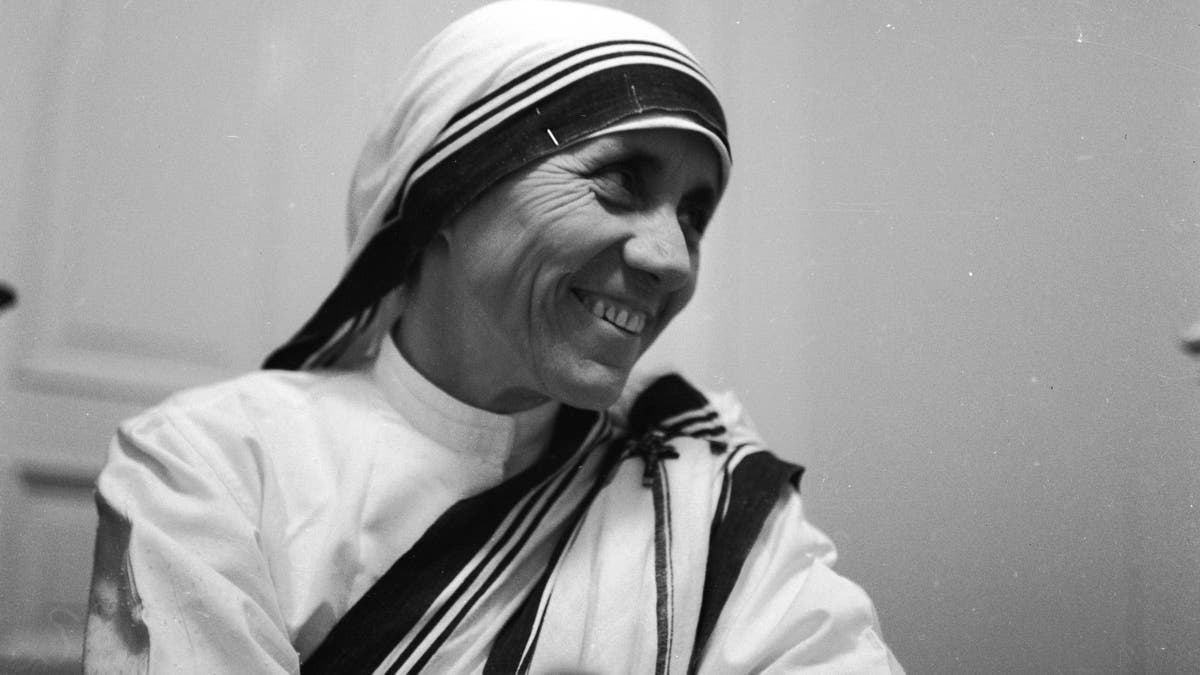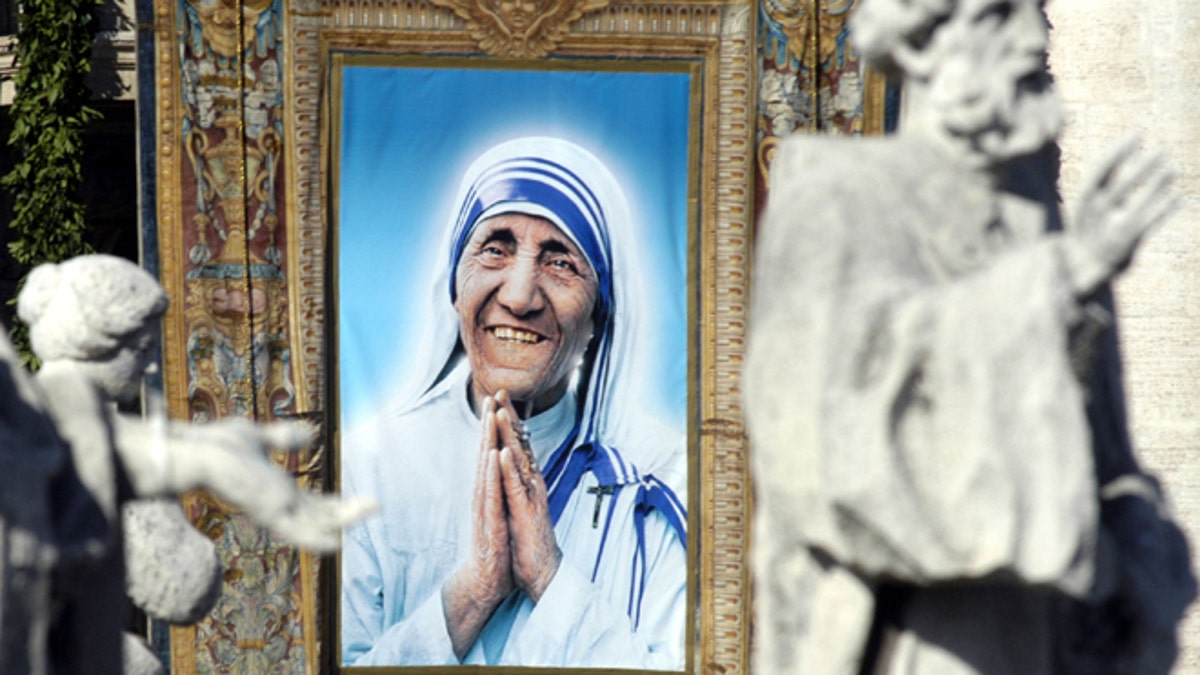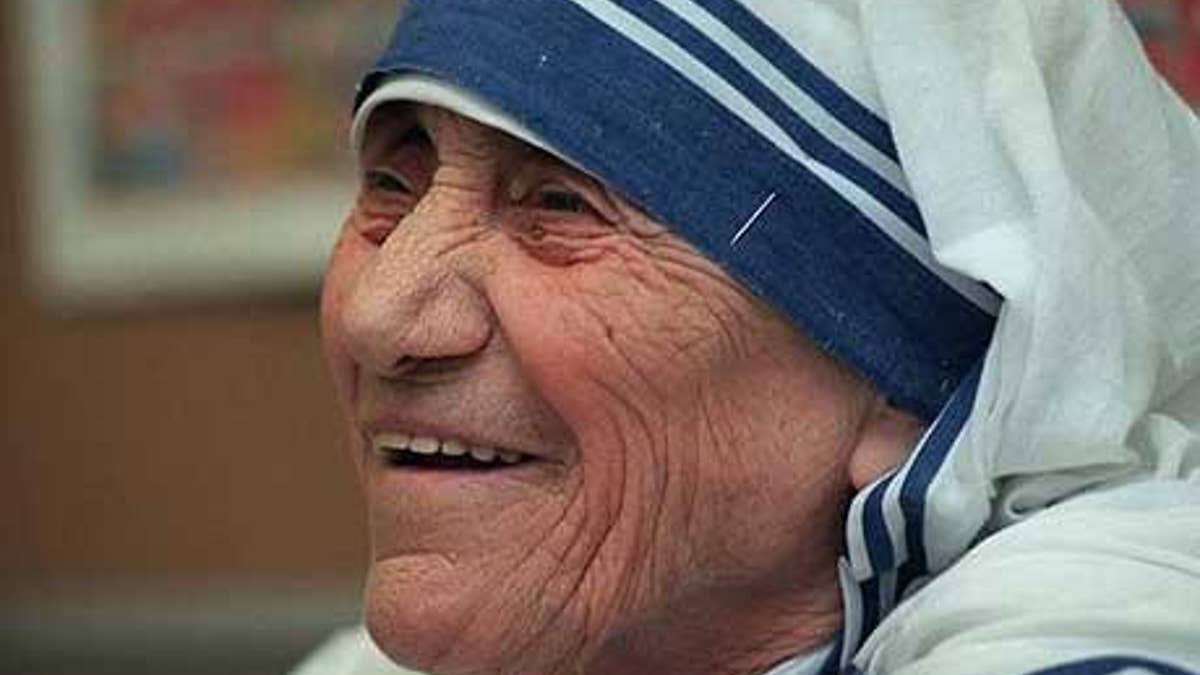Fox News Flash top headlines for March 22
Fox News Flash top headlines are here. Check out what's clicking on Foxnews.com.
St. Teresa of Calcutta, or "Mother Teresa," is often held up as a symbol of selflessness and extreme devotion to charity. As the founder of the Missionaries of Charity and recipient of numerous awards, she is perhaps one of the most iconic figures of the 20th Century.
Born Agnes Gonxha Bojaxhiu in Skopje, Macedonia, she experienced tragedy at a young age with the death of her father. According to Biography.com, Bojaxhiu's mother, Drana, invited the destitute of the city to dine with their family.
She was said to have told her daughter: "My child, never eat a single mouthful unless you are sharing it with others."
Receiving "A Call Within a Call"

November 1960: Mother Teresa (1910 - 1997), the Albanian nun who dedicated her life to the poor, the destitute and the sick of Calcutta, earning the Nobel Peace Prize in 1979. (Photo by Keystone Features/Getty Images) (This content is subject to copyright.)
The future saint first felt a call towards religious life at 12 years of age, when her congregation made a pilgrimage to the Church of the Black Madonna in Letnice. At 18, she traveled to Ireland to join the Sisters of Loreto in Dublin and took the name "Teresa" after the 19th Century St. Therese of Lisieux.
After a brief stay, she traveled to Darjeeling, India and eventually Calcutta, where she taught at a girls' school. Her time as an educator included serving as principal at that school starting in 1944. But shortly thereafter, during a train ride in 1946, she felt what she described as a "call within a call."
"The message was quite clear - it was an order," she reportedly said. "He wanted me to be poor and to love him in the distressing disguise of the poorest of the poor."
VATICAN DECLARES MOTHER TERESA A PATRON SAINT OF CALCUTTA
Devotion to the poor
St. Teresa spent decades working to uplift the poor and received numerous awards for her efforts, including the Nobel Peace Prize in 1979. Known as the "saint of the gutters," she started a religious order which would grow to include thousands of members in more than 100 countries. She also founded the Missionaries of Charity Brothers, Missionaries of Charity Fathers, the Contemplative Brothers, and a contemplative branch for the sisters.
The Missionaries of Charity ministered to the poor, lepers, those with HIV/AIDS, abandoned children, and others in need. Teresa's humanitarian work earned her the Bharat Ratna, India's highest civilian honor, in 1980. The iconic figure went on to receive honorary U.S. citizenship in 1996.

VATICAN CITY - OCTOBER 19: A tapestry depicting Mother Teresa framed by the statues of St. Peter's Colonnade during the beatification ceremony led by Pope John Paul II October 19, 2003 in Vatican City, Italy. Mother Teresa won the Nobel Peace Prize in 1979 for all of her charity work. She died in 1997. (Photo by Franco Origlia/Getty Images) (2003 Getty Images)
As she faced growing health problems, St. Teresa offered to step down as head of the organization but was re-elected with only one dissenting vote - her own - and withdrew her request to step down. She eventually retired due to a worsening heart condition, with her order choosing her replacement in 1997.
MEETING MOTHER TERESA: I'LL NEVER FORGET WHAT I SAW IN HER FACE
Beatification and Sainthood
Mother Teresa's road to sainthood began earlier than expected in 1999 - two years after her death. Traditionally, there is a minimum five-year waiting period after a person's death before the nomination can be submitted. Pope John Paul II cut three years off the waiting period for Mother Teresa – the first time it was ever done in the modern papal era.
According to Encyclopedia Britannica, in 2003, she went through beatification – a thorough investigation into a potential saint’s life which includes a proven miracle attributed to the potential saint’s intercession.
Pope Francis, in 2015, cleared her for canonization -- the final step in the declaration of a saint. To reach this stage, a second miracle, attributed to prayers made to the candidate after they have been beatified, must be met. In Mother Teresa’s case, a Brazilian man had been cured of a viral brain infection years earlier after his wife prayed for Mother Teresa's intercession.

Tens of thousands witnessed her canonization in Italy on Sept. 4, 2016. "Mother Teresa," Pope Francis said at the time, "in all aspects of her life, was a generous dispenser of divine mercy, making herself available for everyone through her welcome and defense of human life, those unborn and those abandoned and discarded."
Stance on abortion
As a Catholic nun, she came under heavy criticism for standing by Church teaching on abortion. Just years after the landmark decision in Roe v. Wade, Mother Teresa declared abortion the "greatest destroyer of peace today."
MOTHER TERESA DECLARED A SAINT BY CATHOLIC CHURCH
"For if a mother can murder her own child in her own womb, what is left for you and for me to kill each other?" she asked in her 1979 Nobel acceptance speech.
She also decried the practice in a jaw-dropping speech in front of former President Bill Clinton and then-Fiirst Lady Hillary Clinton in 1994.
During the National Prayer Breakfast, she said: "By abortion, the mother does not learn to love, but kills even her own child to solve her problems ... abortion just leads to more abortion. Any country that accepts abortion is not teaching its people to love, but to use any violence to get what they want. This is why the greatest destroyer of love and peace is abortion."
CLICK HERE TO GET THE FOX NEWS APP
Her position on that issue encountered criticism from renowned atheist Christopher Hitchens, who suggested she stunted efforts at fighting poverty.
"She spent her life opposing the only known cure for poverty, which is the empowerment of women and the emancipation of them from a livestock version of compulsory reproduction," he said.
The Associated Press contributed to this report.


